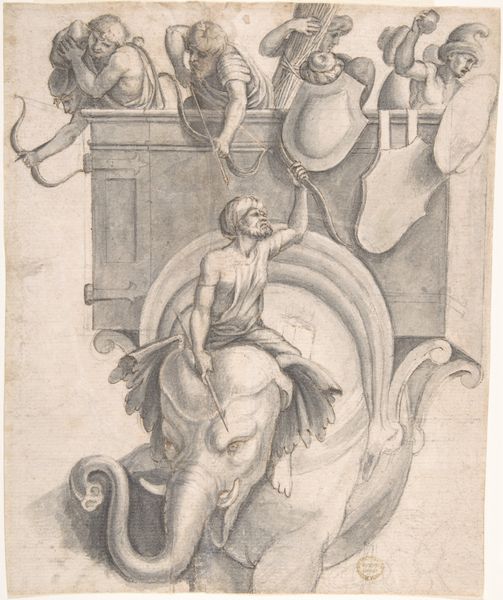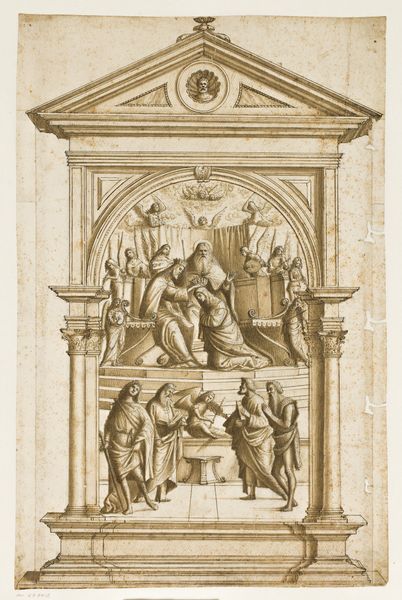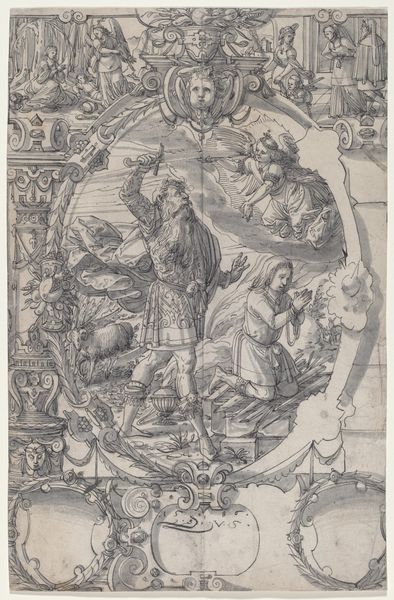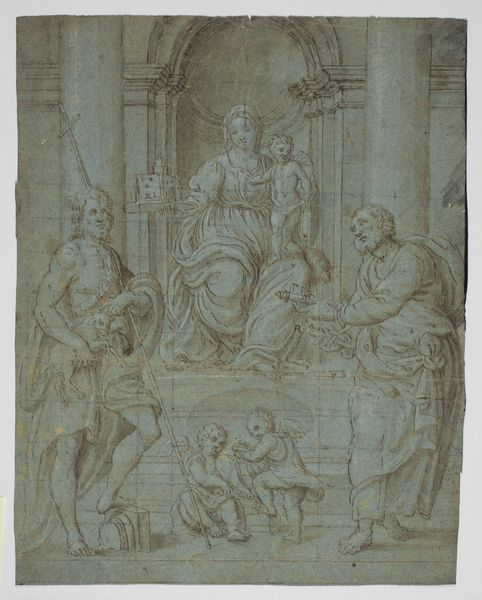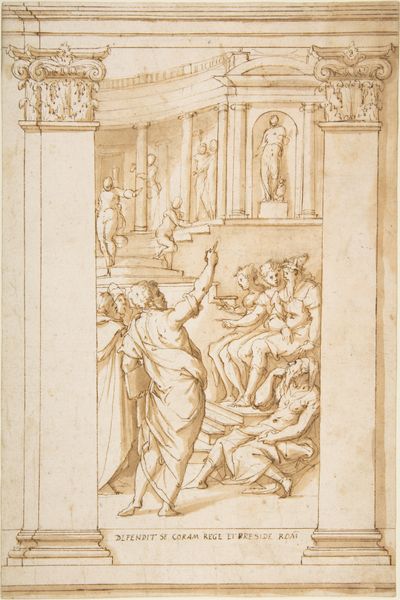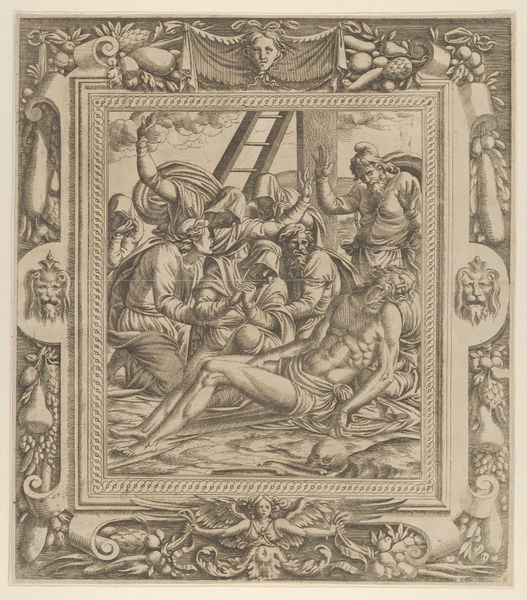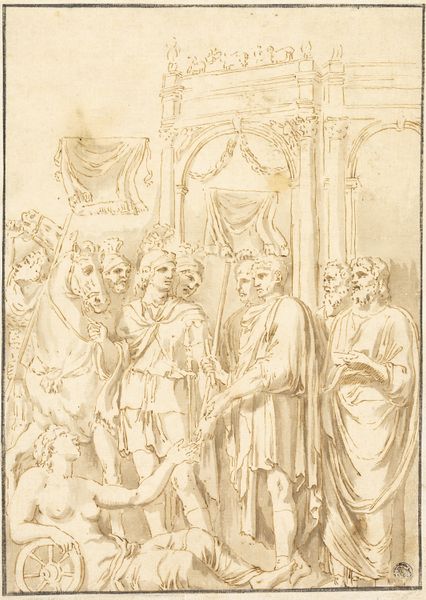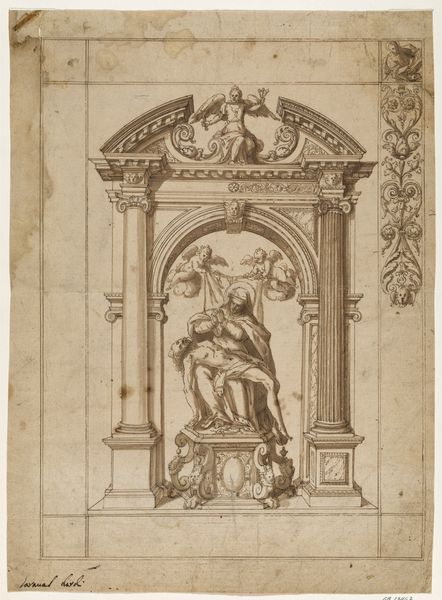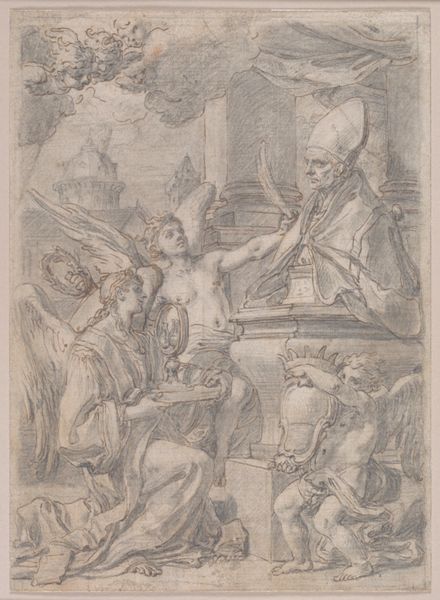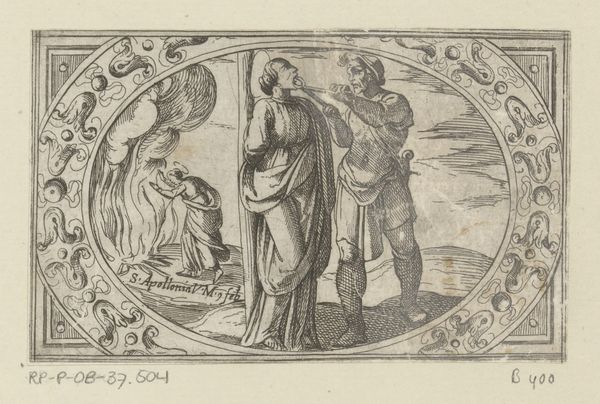
drawing, dry-media, pencil, charcoal
#
portrait
#
drawing
#
neoclacissism
#
pencil sketch
#
charcoal drawing
#
charcoal art
#
dry-media
#
coloured pencil
#
pencil
#
watercolour illustration
#
charcoal
#
history-painting
#
academic-art
#
pencil art
Dimensions: 15 9/16 x 8 3/8 in. (39.6 x 21.3 cm) (image)23 3/4 × 19 3/4 in. (60.33 × 50.17 cm) (outer frame)
Copyright: Public Domain
Editor: This is Augustin Pajou's "Study for a Funerary Monument," created around 1750. It’s a pencil and charcoal drawing, quite striking in its somber mood. The figure draped in cloth seems very contemplative, almost withdrawn. What can you tell me about the message behind this work? Curator: It's crucial to understand the context of Neoclassicism in the 18th century. How does Pajou's design engage with the prevailing philosophies about death, memory, and the role of public art? Note the use of classical motifs - the urns, the idealized figures. How might those elements serve to both memorialize and idealize the deceased, potentially obscuring the realities of their life and the social dynamics they were part of? Is there something performative about grief in Neoclassical art? Editor: Performative... Interesting. So it’s not necessarily about personal mourning, but also about upholding a certain ideal or image? Curator: Exactly. Think about who these monuments were typically commissioned by - wealthy families, powerful institutions. Whose stories get told, and how? What social and political messages are subtly embedded in the representation of mourning and remembrance? And also consider the role of women here; how does the draped figure reinforce or challenge conventional gender roles of the time? Editor: So it’s less a straightforward expression of grief and more of a constructed narrative, influenced by social status and gender roles of the time. Curator: Precisely. The monument becomes a stage, presenting a carefully curated version of history. Recognizing that allows us to see the complex layers of power at play, not just in the artwork itself, but in the very act of memorialization. Editor: That shifts my perspective entirely. I initially saw it as a purely emotional piece, but it’s much more deliberate and multifaceted than I thought. Curator: And by questioning those seemingly simple artistic choices, we can engage in a more critical dialogue with both the artwork and the society that produced it.
Comments
minneapolisinstituteofart almost 2 years ago
⋮
Augustin Pajou’s earliest known drawing, this study testifies to the twenty-year-old sculptor’s excellent draftsmanship, for which he was celebrated throughout his career. The two portrait profiles on the medallion and the pair of urns indicate that this is a double tomb for a husband and wife. Pajou’s family name is inscribed on one of the columns, but in light of his humble origins and modest financial situation, this monument seems an entirely fanciful exercise. The tomb displays the full panoply of funeral iconography established by the high nobility. The difficulty of adapting it for a family of carpenters and sculptors might account for Pajou’s drawing a rather unspecific pleurante (mourner) holding a laurel branch as the main figure. The books piled under the portrait medallion on the pedestal emphasize the deceased’s erudition rather than any specific accomplishments or skills, let alone of a manual kind. An identification of the couple meant to be honored by the imaginary tomb is conjectural, and even the inscriptions remain mysterious.
Join the conversation
Join millions of artists and users on Artera today and experience the ultimate creative platform.
